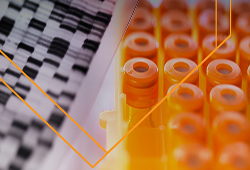 Given that artificial intelligence (AI) – historically the domain of software companies – is a new frontier for many life sciences companies, we have assembled five helpful tips to consider for protecting AI technologies:
Given that artificial intelligence (AI) – historically the domain of software companies – is a new frontier for many life sciences companies, we have assembled five helpful tips to consider for protecting AI technologies:
Tip 1: Make sure you have permission to use the data
Familiarize yourself with the data privacy rules applicable to the types of data you are collecting and develop an appropriate consent form with all proper disclosures and terms.
Tip 2: Get IP assignments from everyone contributing to the AI technology
For AI technologies, the universe of contributing individuals may be broader than expected. For example, individuals that: (1) select the data to be acted on by an AI engine, (2) review the outputs of an AI engine, (3) select the algorithms used to train the AI model and tune the modeling parameters, and/or (4) write the source code to implement an AI engine.
Tip 3: Be careful when using open source software
Incorporate good hygiene around your use of open source software and implement policies and procedures to ensure that no source code is used that could jeopardize the secrecy of your proprietary code.
Tip 4: Be thoughtful about the type of legal protection you want for your technology
Consider the following factors when deciding between patent and trade secret protection: (1) likelihood of independent invention, (2) detectability of the invention, and (3) speed of innovation.
Tip 5: If you choose patent protection, employ strategies to maximize chances of success
Describe in your patent applications the AI model’s performance and the improvement(s) over conventional techniques. Ideally, use statistical data such as ROC curves, measures of predictive values (PPV or NPV), confusion matrices, F1 scores, and other similar data.
Read the full insight

 Goodwin Life Sciences and Healthcare partner
Goodwin Life Sciences and Healthcare partner 


 Given that artificial intelligence (AI) – historically the domain of software companies – is a new frontier for many life sciences companies, we have assembled five helpful tips to consider for protecting AI technologies:
Given that artificial intelligence (AI) – historically the domain of software companies – is a new frontier for many life sciences companies, we have assembled five helpful tips to consider for protecting AI technologies: